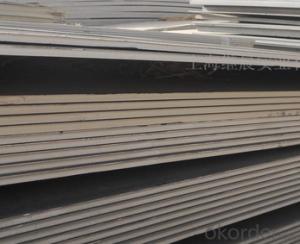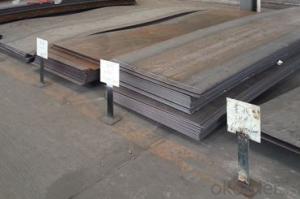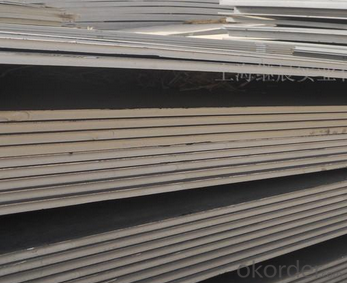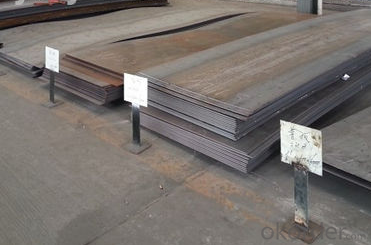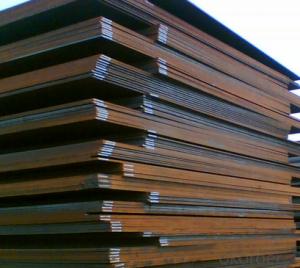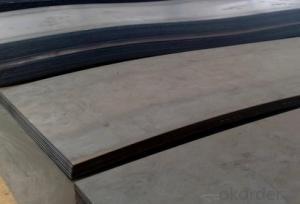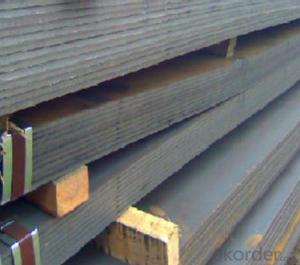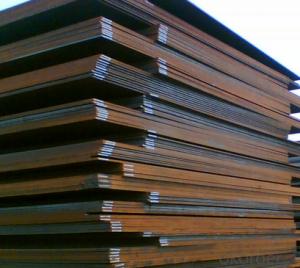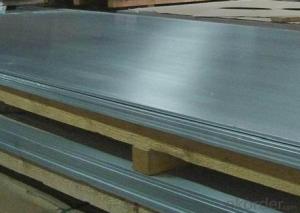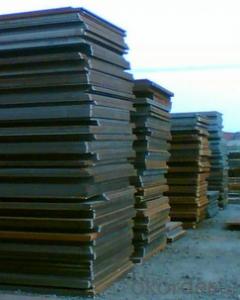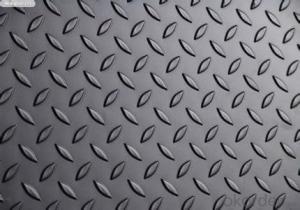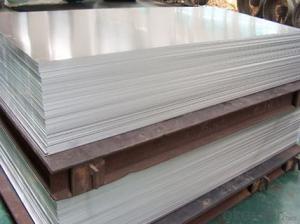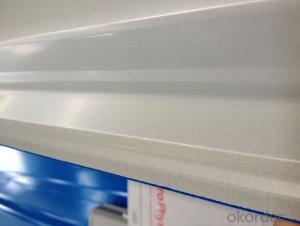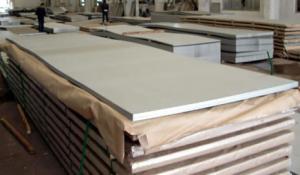Hot Rolled Carbon Steel Plate,Carbon Steel Sheet Q345C, CNBM
- Loading Port:
- Qingdao
- Payment Terms:
- TT OR LC
- Min Order Qty:
- 10 pc
- Supply Capability:
- 30 pc/month
OKorder Service Pledge
OKorder Financial Service
You Might Also Like
Quick Details
| Standard: | AISI, ASTM, GB, JIS | Grade: | Q195,Q235,Q345,A36,C45 | Thickness: | 1.0-30MM |
| Model Number: | Q235,Q195,Q345 | ||||
| Type: | Steel Plate | Technique: | Hot Rolled | Surface Treatment: | Coated |
| Application: | Ship Plate | Special Use: | Silicon Steel | Width: | 30-2000mm |
| Length: | as your requirement | standard: | hot rolled | Surface: | Anti-rust oil |
Packaging & Delivery
| Packaging Details: | seaworthy packages or as customers' require |
| Delivery Detail: | within 15 days after the advance payment |
Hot rolled steel plate
1 carbon steel plate 3mm thick General information
| Product name | Type | Specification | Implementation of GB | ||
| thick | wide | long | |||
| Carbon structural steel | Q195,Q215, Q235A,Q235B, Q235C,Q255, Q275 | 4-120 | 1500-4500 | 6000-12000 | GB/T700-2006 |
| Low-alloy structural steel | Q295,Q345A, Q345B,Q2345C | 4-120 | 1500-4500 | 6000-12000 | BG/T1591-1994 |
| Quality carbon structural stee | 30-50 | 4-120 | 1500-4500 | 6000-12000 | BG/T699-1999 |
| Ship steel | CCSA,CCSB | 4-120 | 1500-4500 | 6000-12000 | materials and welding condition |
| CCSAH32,CCSAH36 CCSDH32,CCSDH36 | 4-120 | 1500-4500 | 6000-12000 | materials and welding condition or GB 712-2000 | |
| Boiler steel | 20g,22Mng, 16Mng,19Mng | 4-120 | 1500-4500 | 6000-12000 | GB 713-1997 |
| Pressure vessel steel | 1622Mng,20R, 15MnVR,15MnVNR | 4-120 | 1500-2700 | 6000-12000 | GB 6654-1996 |
| European standard plate
| S235JR,S235J0, S275JR,S275J0, S275JR2,S355JR, S355J0,S355J2 | 4-120 | 1500-4500 | 6000-12000 | EN 10025 |
| Japanese standard plate | SS400,SS400-B | 4-120 | 1500-4500 | 6000-12000 | JIS G3101-2004 |
2 carbon steel plate 3mm thick detail specification
Material:
A283Gr.D/A573Gr.65,A516Gr65,A516Gr70,A284Gr.D
SS400,SS300,CCSB A36,A32,LRA32,LRB,Q235
Q195,Q235,Q345,SS400,ASTM A36,E235B
Thickness: 4mm-120mm
width: 1500mm-4500mm
Length:2-10m ,accordingly
Thickness | 4-120mm |
Width | 1500-4500mm or as custom's request |
Length | 2-12m,as your requirment |
Technique | Cold rolled or hot rolled |
Surface treatment | Bare, galvanized coated or as customer's requirements. |
Standard | ASTM,EN,GB,JIS,GB |
Material | A283Gr.D/A573Gr.65,A516Gr65,A516Gr70,A284Gr.D SS400,SS300,CCSB A36,A32,LRA32,LRB,Q235 Q195,Q235,Q345,SS400,ASTM A36,E235B |
Terms of Payment | L/C or T/T |
Chemical composition | C≤0.004%;Si≤0.030%; Mn ≤0.17%;P≤0.012%; S≤0.010%; Fe balance |
Delivery Detail | within 30days once receive deposite or confirm L/C |
Packing | Standard export packing,or as requirement |
3 carbon steel plate 3mm thick application:
construction,machinery manufacturing, container manufacturing, shipbuilding, bridge construction. Can also be used to manufacture a variety of containers, the furnace shell, furnace plate, bridge and vehicle static steel plate, low alloy steel plate,shipbuilding plate, boiler plate, pressure vessel plate, pattern plate, tractor parts, automobile frame steel plate and welding components
- Q: Can steel sheets be used for water tanks or reservoirs?
- Yes, steel sheets can be used for water tanks or reservoirs. Steel is a durable and strong material that is commonly used for constructing water tanks due to its ability to withstand high pressure and resist corrosion. Additionally, steel tanks can be easily fabricated and customized to meet specific size and capacity requirements. However, proper coating and maintenance are necessary to prevent rusting and ensure the longevity of the tank.
- Q: Can steel sheets be used for water drainage systems?
- Yes, steel sheets can be used for water drainage systems. Steel is a durable and corrosion-resistant material that can effectively channel and redirect water flow.
- Q: What are the different types of steel sheet finishes for architectural applications?
- Architectural applications commonly utilize various types of steel sheet finishes, each serving a different purpose. These finishes not only enhance the visual appeal of steel sheets but also offer protection against corrosion and environmental factors. 1. Mill Finish: The most basic type of finish, the steel sheet remains as it is from the mill. It has a dull, gray appearance and is typically used for applications where aesthetics are not a priority. 2. Brushed Finish: Also known as a satin finish, this type of finish is achieved by brushing the steel sheet with a fine abrasive material. It results in a smooth, linear texture, giving the surface a contemporary and elegant look. 3. Polished Finish: Achieved by polishing the steel sheet with abrasive materials, this finish creates a smooth and reflective surface. It offers a high-gloss, mirror-like appearance, making it suitable for applications that require a sophisticated and luxurious look. 4. Embossed Finish: This finish involves pressing the steel sheet with embossing tools to create textured patterns or designs on the surface. It provides a unique and decorative appearance, ideal for architectural applications that require visual interest. 5. Patterned Finish: This finish entails applying patterns or textures onto the steel sheet using techniques like etching, laser cutting, or perforating. It creates visually appealing surfaces with intricate designs, suitable for both functional and decorative purposes. 6. Powder Coated Finish: This finish involves electrostatically applying a layer of dry powder paint to the steel sheet, which is then cured under heat. It offers a durable and vibrant finish, available in a wide range of colors and textures. This finish is highly resistant to chipping, scratching, and fading, making it ideal for exterior architectural applications. 7. Galvanized Finish: This finish is achieved by applying a layer of zinc coating onto the steel sheet through galvanization. It provides excellent corrosion resistance, making it suitable for outdoor architectural applications exposed to harsh environments. In conclusion, the choice of steel sheet finish depends on the desired aesthetics, durability, and environmental conditions of the architectural application.
- Q: How do steel sheets perform in terms of earthquake resistance?
- Steel sheets are highly effective in terms of earthquake resistance due to their high strength and ductility. They are capable of absorbing and dissipating seismic forces, providing structural stability and reducing the risk of collapse during an earthquake. Additionally, steel sheets can be easily reinforced and retrofitted to enhance their earthquake resistance, making them a preferred choice in seismic-prone areas.
- Q: What is the difference between a painted and powder coated steel sheet?
- The main difference between a painted and powder coated steel sheet lies in the application process. Painted steel sheets involve applying liquid paint onto the surface, which can result in a thinner and less durable coating. On the other hand, powder coated steel sheets involve electrostatically applying dry powder onto the surface, followed by curing in an oven, resulting in a thicker and more durable coating. Powder coating also offers better resistance to chipping, scratching, and fading compared to traditional paint.
- Q: Can steel sheets be used for soundproofing or insulation?
- While steel sheets can indeed be utilized for soundproofing or insulation, they do not possess the same level of efficacy as materials specifically engineered for these functions. The density and sound- and heat-blocking capabilities inherent in steel sheets do confer some natural soundproofing and insulating properties to a certain extent. Nevertheless, their efficiency pales in comparison to those of dedicated soundproofing materials like acoustic panels or fiberglass insulation. To enhance the soundproofing or insulation attributes of a structure, steel sheets can be employed as an additional layer, but for optimal outcomes, they should be combined with other materials.
- Q: How do steel sheets perform in terms of scratch resistance?
- Steel sheets are known for their exceptional scratch resistance. Due to their strong and durable nature, steel sheets are highly resistant to scratches and abrasions. This makes them ideal for various applications where the material may come into contact with potentially damaging objects or surfaces. Steel sheets can withstand normal wear and tear, making them suitable for heavy-duty and high-traffic environments. Additionally, steel sheets can be further enhanced with coatings or finishes to provide an even higher level of scratch resistance. Overall, steel sheets are renowned for their excellent scratch resistance, making them a reliable choice for many industrial and commercial applications.
- Q: Are steel sheets suitable for high-temperature insulation?
- No, steel sheets are not suitable for high-temperature insulation as they conduct heat rather than insulate against it.
- Q: Can steel sheets be used for making HVAC ducts?
- Yes, steel sheets can be used for making HVAC (Heating, Ventilation, and Air Conditioning) ducts. Steel is a commonly used material for HVAC duct fabrication due to its strength, durability, and fire resistance properties. Steel sheets are typically cut, formed, and welded together to create ductwork that can efficiently transport air throughout a building. The use of steel sheets ensures that the ducts can withstand the high temperatures and pressures associated with HVAC systems while maintaining structural integrity. Additionally, steel ducts are less prone to damage from pests, moisture, and mold growth compared to other materials. Overall, steel sheets are a suitable choice for making HVAC ducts due to their reliability and ability to meet the necessary performance requirements.
- Q: What is the thickness tolerance for steel sheets?
- The thickness of steel sheets can differ depending on the grade of steel and the way they are made. Usually, the standard in the industry for steel sheet thickness tolerance is around ±0.005 inches (0.13 mm). Nevertheless, it is crucial to consider that various applications and industries might have their own specific tolerance needs. Thus, it is vital to refer to the applicable standards and specifications for the particular steel sheet in use to ascertain the suitable thickness tolerance. Moreover, certain manufacturers may provide stricter tolerances as per customer requirements or for specialized purposes.
Send your message to us
Hot Rolled Carbon Steel Plate,Carbon Steel Sheet Q345C, CNBM
- Loading Port:
- Qingdao
- Payment Terms:
- TT OR LC
- Min Order Qty:
- 10 pc
- Supply Capability:
- 30 pc/month
OKorder Service Pledge
OKorder Financial Service
Similar products
Hot products
Hot Searches
Related keywords
